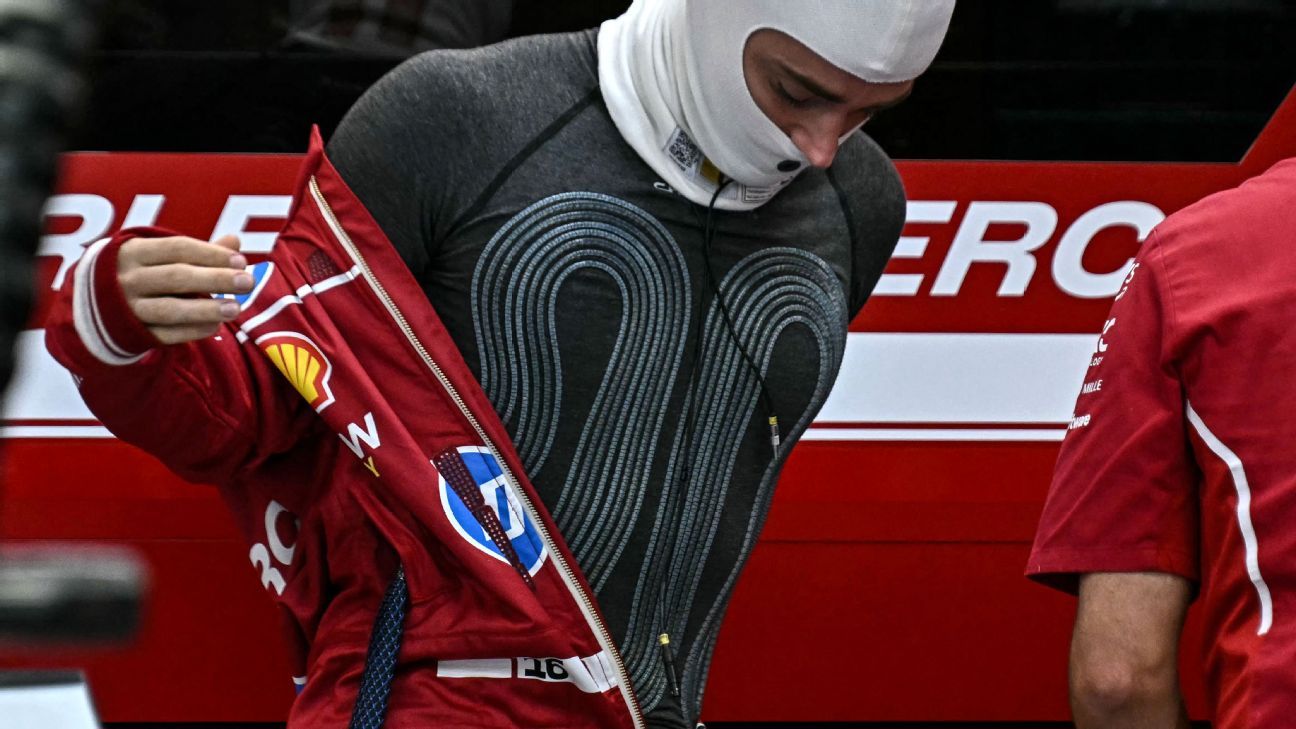
The FIA has declared a “heat hazard” at the Singapore Grand Prix, meaning drivers have the option of wearing cooling vests to combat the extreme temperatures and humidity forecast this weekend.
With temperatures due to hit 31°C (81°F) over the course of the weekend and humidity above 75%, it is the first time Formula 1’s race director Rui Marques has applied the regulation.
In declaring a heat hazard, F1’s rules state that the minimum weight of the car is increased by five kilograms to accommodate the hardware used to run the liquid-cooled vest worn by the driver.
Drivers can still opt out of wearing the vest, but they will need to run with extra ballast so that those opting to use it are not at a weight disadvantage.
The heat hazard rule was introduced in reaction to the 2023 Qatar Grand Prix, which also took place in intense heat and humidity.
Williams driver Logan Sargeant retired from the race due to the conditions, while Lance Stroll collapsed by his car after the race, after being on the verge of blacking out in high-speed corners.
Typically, a driver will lose as much as three kilos of body weight through sweat during the two-hour race in Singapore, which is the equivalent to losing three litres of fluid.
Depending on the driver’s starting weight, which can be anywhere between low-60 kilos for shorter drivers and as much as 75 kilos for taller drivers, they experience somewhere in the region of 4% to 5% body-weight loss by the end of the race.
– Singapore heat, humidity will test F1 drivers’ fitness
How do the vests work and what are the drawbacks?
The system works by pumping a coolant through thin tubes stitched into the vest.
Drivers have complained that the connecting valve to the pump, which was originally placed on the side of the vest, proved uncomfortable when combined with the high G-forces experienced in an F1 car.
On some vests the connector has been moved to find a more comfortable position, but the thick material and tubing have also proved cumbersome under the driver’s fireproof overalls.
There are also concerns over the reliability of some systems and the possibility that a failure will mean the vest will have the opposite effect and work as a heat insulator.
“Teams are managing to make it work better and better every time we run it,” Williams driver Carlos Sainz said. “At the beginning, we had it to work more or less for half an hour. Hopefully now the whole system can work at least for an hour.
“It’s a two-hour race. I’ve done it 10 times in Singapore. If it breaks or it doesn’t work, I’m not worried. I’ll do the race and jump out fresh like I always do. But if it works, it’s better, because then you suffer a bit less.”
What have the drivers said?
The cooling vests have been developed by teams and specialist suppliers over the past two years, and some drivers have already used the technology at races that were not declared a heat hazard.
“We’ve used the driver cooling vest a few times already this season at the hot races,” George Russell said. “Not everybody finds the top comfortable, but I think some find it more comfortable than others.
“And of course, over time, you’ll be able to adjust it to your own preferences. But the concept is good.
“When you’re racing in 90% humidity and the cockpits are getting on for 60 degrees, it’s a bit of a sauna inside the car. So I think we all welcome it,” Russell added.
Seven-time champion Lewis Hamilton said it’s uncomfortable. “I’ve never used it but I’ll try,” he said on Thursday. “It’s quite uncomfortable.
“It itches a lot so I’m not sure I want to drive with an itchy top on.”
Sauber driver Nico Hulkenberg said he was convinced to wear the vest in Singapore after sharing a flight back with Alex Albon following the Saudi Arabian Grand Prix in which the Williams driver had worn a vest and he had not.
“After Jeddah, I was toast after the race,” Hulkenberg said. “It was bloody hot. And I had Alex [Albon] next to me on the plane, and he ran the thing, and he was fresh like a spring chicken. So I said, next time I’m going to run that thing.”



